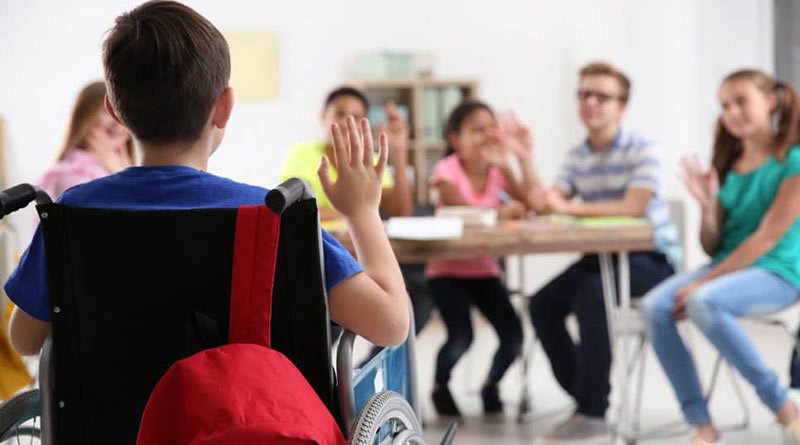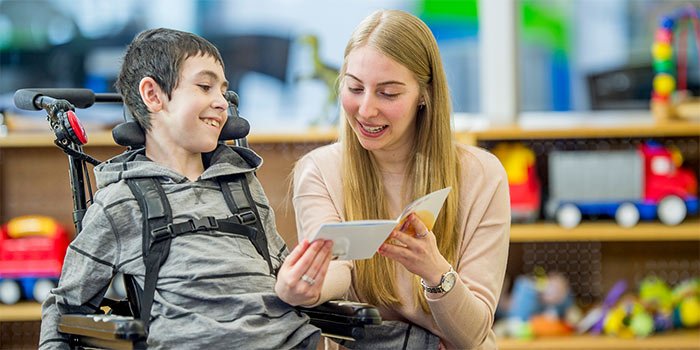No child wishes to be disabled, however, in the case of born disabled or becoming Disabled Students during childhood, these children require special support and help. Some parents ignore educating children with severe learning needs and this brings a gap in their education. A failure to respond positively by providing the necessary educational needs not only impacts a child’s life, but also the entire community.
There are different forms of disabilities in children and students and they also vary in severity. A report from UNICEF asserts that there are nearly 240 million children with disabilities globally. The organization also indicates that 1 in 10 children with disabilities globally experiences deprivation in terms of education, health, and protection. Some children with mild to moderate disabilities may require basic support during the early stage, but such disabilities may fade away with time. This can help them attend normal schools like other children.
There are different forms of disabilities in learners, including low vision, hearing loss, mobility disabilities, and psychiatric disabilities. Others include traumatic brain injury and chronic health disorders like epilepsy, diabetes, Crohn’s disease, and multiple sclerosis.
Unfortunately, in the case of severe disabilities, like epilepsy, physical impairment, or cases of multiple learning disabilities, students may require an appropriate educational setting throughout their educational life.
A student is believed to require special educational needs (SEN) in case they can’t learn or function properly in normal educational settings. Learning problems or disabilities may be difficult to identify unless it’s an obvious disability such as a speech disorder. Other problems like epilepsy may take a while before a teacher understands that a student has a severe or chronic condition that also negatively impacts learning outcomes or experiences.
Teaching students with disabilities should be handled with care as it may cause stigmatization within a classroom. Some learning disabilities are temporary whereas others are chronic. Teaching techniques like peer teaching, aided learning, cooperative learning, and multisensory approach can help students with learning disabilities improve their learning outcomes.
Besides, the best approach to helping out students with learning disabilities includes an assess-plan-do- and review approach. However, identifying the educational needs of disabled students isn’t easy.
Here are some of the ways teachers can leverage to identify the educational needs of disabled students;
Familiarizing with Student Disabilities
There are different forms of student disabilities, including dyslexia, attention-deficit hyperactivity disorder, blindness, and hearing loss. These can affect the way a student learns, perceives, or memorizes the information. Other issues that may exist in students include the inability to focus on a task, poor time management skills, and reading comprehension disabilities, among others.
Student disabilities may generally be classified under behavioral, physical, cognitive, and neurological-based disabilities. When teachers are familiar with the different types of learning disabilities that exist in students, they are keen to identify them and deal with them effectively.
They ensure the plan of curriculum and co-curricular activities that are to be performed in and out of the classroom accordingly. Identifying learning gaps is also prioritized by teachers rather than when they aren’t aware of the possible student learning disabilities. They are also better positioned to offer quality support to meet educational, social, physical, and emotional needs.
Creating a Positive Learning Environment
Having a learning disability commonly causes mental distress in students as they are unable to live or study like the rest. In many instances, these students try to conceal their disabilities instead of seeking the appropriate help. With that, it may be difficult to identify their learning disabilities unless they reveal it or such an incident happens.
Therefore, it’s essential for teachers to create the right learning environment that is characterized by empathy, and emotional intelligence. Creating an all-inclusive learning environment highly requires a teacher to master the art of classroom management and follow the right classroom practices.
Teachers should model the right classroom behavior and ensure an upper hand on discipline. They should also encourage students to practice empathy and quality social skills like showing kindness and helping others. These can create an atmosphere where students with disabilities feel safe and free to reveal their disabilities.
Leverage Different Teaching Mediums
Although trying out different teaching mediums can help to improve learning outcomes, it can also help identify students’ educational needs. Not all students are the same and even if they are students with no educational needs, their learning capabilities may differ greatly. Some students may memorize concepts better with the help of illustrations, while others through flipped classrooms.
Introducing different learning styles such as storytelling, practicals, and discussions can help teachers identify learning gaps and educational needs. During such classes, it’s essential to connect with the student on an individual level. Let every student take part in the specific learning approach to help you assess the learning outcomes.
With this, a teacher can identify that student A finds it hard to learn in a second language, student B has color blindness and student C can’t understand concepts at an average pace. With this, a teacher would be able to learn about the different educational needs and design the curriculum or plan classroom activities to help disabled students learn better.
Track Learning Outcomes
Teaching isn’t a mere activity of dictating notes to students and giving tests one after the other. It is highly essential for teachers to track students’ progress. When teachers are focused on tracking learning outcomes, they are also focused on understanding the reason for such performances.
With that, a teacher should ensure to track students in class and outside performance, for example through their homework and interactions. This can help teachers identify behavioral issues, communication, or learning problems that a student may be facing.
Seeking Student Feedback
Communication is an important aspect of social interactions and a way of building relationships. All around the world, communication influences the outcomes of social interactions and processes. The 7Cs of communication are the criteria for effective communication. Like anywhere, communication between teachers and students must be characterized by those facets.
Teachers should ensure to foster a culture of effective communication characterized by feedback sharing. When students with learning disabilities are free to communicate their learning difficulties, it helps the teachers to identify them, and alter teaching styles including the curriculum and classroom activities accordingly.
Interacting With Parents & Guardians
It is essential for teachers to develop a relationship with the parents of their students. Through this, they are in a better position to understand the educational needs of the students and how to meet them. It can also help create a safe learning environment for disabled students.
As a teacher, ask parents about their children’s health conditions, any disability they are struggling with or the issues they face while doing their homework. This will help a teacher to identify whether a child has a mild, moderate, or severe disability. In that, teachers can alter teaching styles to accommodate the child or recommend other educational institutions that are better equipped at handling children with similar disabilities.
Conclusion
Learning disabilities are common and range from mild, to moderate, to severe or chronic. Depending on the type, learning disabilities may require a child to access special education support and that may include physical, emotional, and social aid. It should be noted that identifying the educational needs of disabled students may not be obvious as some students conceal their disabilities.
With that, it’s very important for teachers to establish quality relationships with the student’s parents or carers. This will help educators identify the disabilities and allow them to design the appropriate educational support plan and activities that can help a student learn better and optimize the learning outcomes.





